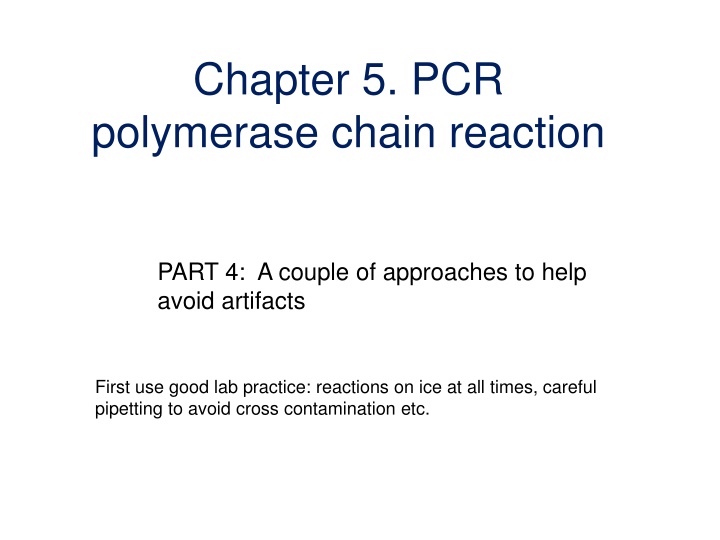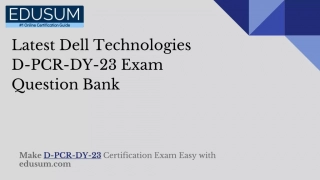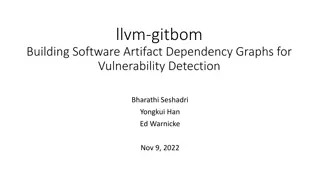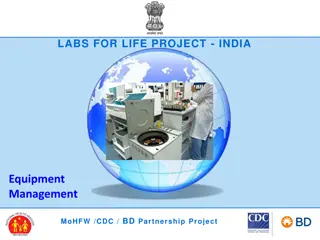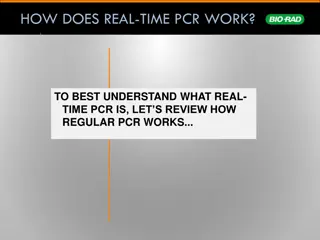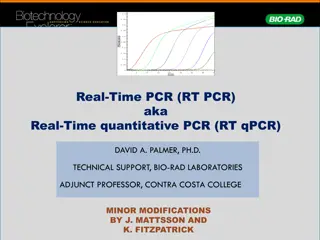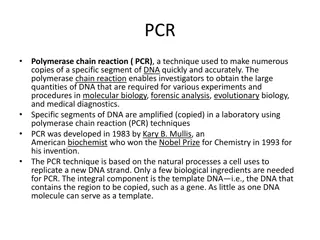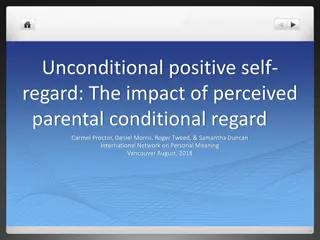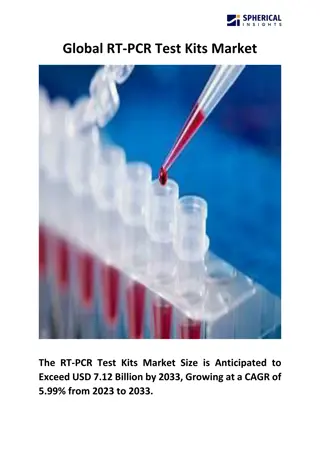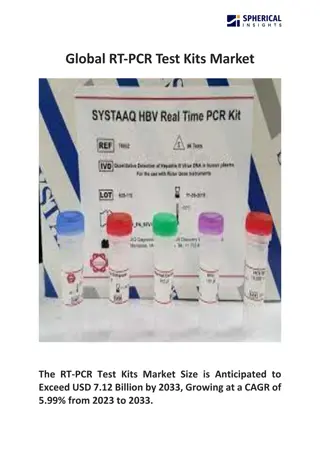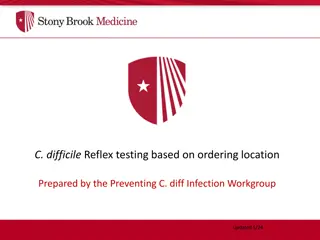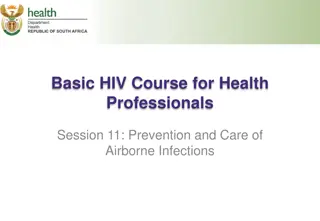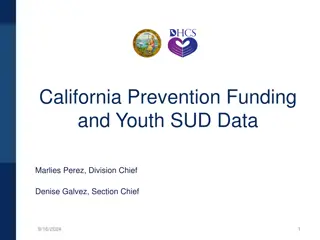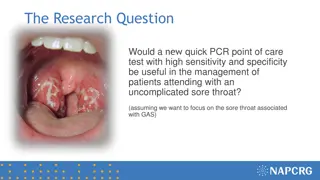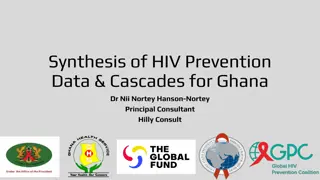PCR Best Practices for Artifact Prevention
This guide discusses practical approaches to avoid artifacts during PCR, including tips for lab practices, determining annealing temperature, running gradient PCR, and using touchdown PCR. Gel purifying DNA bands is also explained to address unavoidable artifacts.
Uploaded on Feb 19, 2025 | 0 Views
Download Presentation

Please find below an Image/Link to download the presentation.
The content on the website is provided AS IS for your information and personal use only. It may not be sold, licensed, or shared on other websites without obtaining consent from the author.If you encounter any issues during the download, it is possible that the publisher has removed the file from their server.
You are allowed to download the files provided on this website for personal or commercial use, subject to the condition that they are used lawfully. All files are the property of their respective owners.
The content on the website is provided AS IS for your information and personal use only. It may not be sold, licensed, or shared on other websites without obtaining consent from the author.
E N D
Presentation Transcript
Chapter 5. PCR polymerase chain reaction PART 4: A couple of approaches to help avoid artifacts First use good lab practice: reactions on ice at all times, careful pipetting to avoid cross contamination etc.
Determining the best annealing temperature AIM: We want a good amount of product and no artifact bands APPROACH: Use a gradient PCR machine to run multiple replicates of identical PCR reactions, each with a different annealing temperature Bisc 357 2
Procedure 1. Prepare one large reaction and divide into several PCR tubes 2. Load onto machine with programmed gradient 3. Identify most effective annealing temp by gel electrophoresis 500C 600C Bisc 357 3
Example, gradient PCR results 52oC 72oC annealing temperature specific amplicon Unspecific amplicon Higher annealing temperatures result in reduced low-molecular non-specific amplification and increased amplification of the target amplicon Bisc 357 From Takara Inc
Another approach to avoiding artifacts We program the PCR machine to start with an annealing temperature that is too high, and then decrease a degree every cycle So if for instance, the annealing temperature was 55oC, we might start at 66oC The next cycle the annealing temperature is 65oC Do this for about 10-12 cycles, and then do 20 more cycles at the final annealing temperature Because you start higher than the optimal temperature there is no opportunity for artifacts to be generated Called touchdown PCR Bisc 357 5
Finally Sometimes you cannot avoid artifacts In that case you can gel purify the band Run out all of the PCR reaction in a gel using a low percentage, 0.7 or 0.8% Cut out the agarose that contains the desired band, trimming away excess agarose Several protocols for purifying the DNA from the band Bisc 357 6
Methods Very old method: We used to put the gel band in a pipette tip that had been stuffed with siliconize glass wool and put it in the centrifuge The DNA came out in the collection tube underneath, was extracted and precipitated Low melt agarose: You can use agarose that can be heated; the agarose melts and then you do phenol/chloroform extraction, ethanol precipitation Agarase: Instead of melting the agarose, you treat with agarase to degrade it and then you do phenol/chloroform extraction, ethanol precipitation Collection kits using columns: These dissolve the agarose and then the whole solution is poured into a column, and the rest of the procedure is just like other DNA column preps Bisc 357 7
